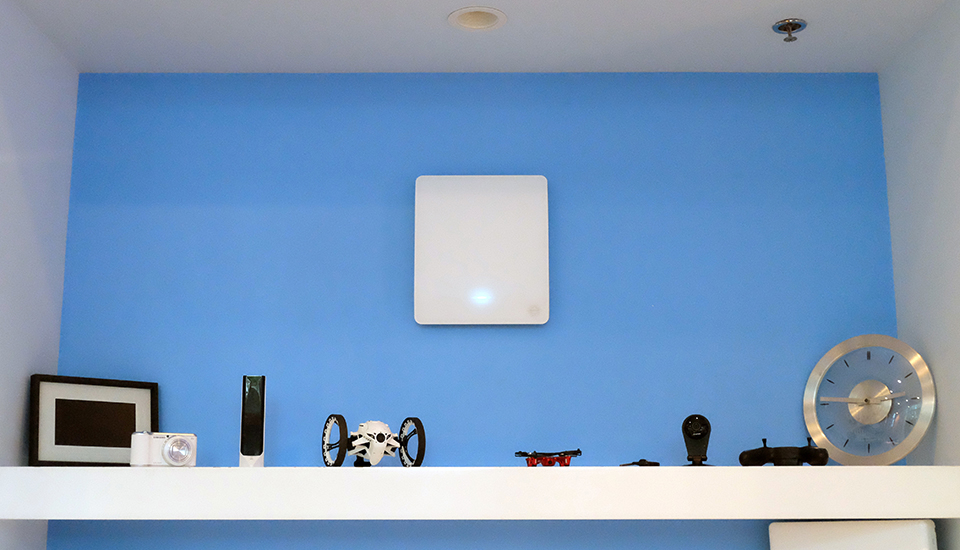Charge your iPad via WiFi... and no, this time it's not a prank.
 Every so often we may come across fake iOS apps that promise to enable an iPhone or iPad to convert WiFi signal into AC power, and got at least a chuckle or two out of the concept.
Every so often we may come across fake iOS apps that promise to enable an iPhone or iPad to convert WiFi signal into AC power, and got at least a chuckle or two out of the concept.
California-based Energous Corporation’s CEO Stephen Rizzone has decided to assemble a dream-team of his own to quiet the chuckles and possibly kill charging pads in the process, with WattUp™, a system comprised of dedicated RF receivers, connected to a central unit, that detects up to 12 devices in need of a charge, and effectively converts wireless signal into electricity, within a 15 foot radius.
A transmitter unit, or “Power Router”, is required to detect devices to be charged, and send the RF charging signal. Receiver chips embedded into each iPhone, iPads and any other device requiring less than 10Watts to operate, are necessary to convert the RF signal into electricity. Receivers communicate with the Power Router via Bluetooth signal, “calling” the router when a charge is needed, or falling below a set threshold.
For a product so ambitious, it’s impossible not to be skeptical, however Energous website’s F.A.Q. page gives a bit more insight into the product revealing some impressive specs.
According to Energous, if we were to charge up to four devices, within 5 feet of the Power Router, the charging rate would be identical as if they were plugged into a wall outlet, delivery up to 4 Watts of electricity to each device.
As we move the devices further away, the charging rate decreases down to 1 Watt per device, or what we could assume as 4 Watts in case we have only a single device to power up. If we were to charge as many as the maximum recommended 12 devices, each one would receive dynamically a minimum of 1/4 Watt of electricity.
Charging can be conveniently programmed and managed with a web interface, similarly to a regular WiFi router, which allows control of the system via any device with a web browser, capable of connecting to the local WiFi.
While we can’t expect the math to be this refined and clean-cut, as environmental factors are guaranteed to affect RF signal, just as much as any other RF device, the specs are still impressive and it’s definitely worth looking forward to further development of this system.
Wireless chargers currently available, consist of charging pads that are not always convenient, especially when it comes to iPads and other tablets, unfit for such a tight space, especially since charging pads cannot be moved away from a wall outlet. In contrast, WattUp provides a way to keep devices charged, all day long, without interruption.
The company’s initial claim to be able to charge devices requiring up to a maximum of 10 Watts seems a safe enough testing ground for what could possibly result in heavier applications, perhaps not within a civilian household, for obvious safety reasons related to signal strength and radiation levels, but one can certainly see an evolution of this design applied to larger battery-powered appliances, like laptop computers and scientific instruments, typical of aerospace engineering environments, military and first responders equipment.
This is why it’s easy to see how a partnership with Apple might give this system a huge boost, and possibly motivate the Cupertino tech giant to integrate wireless charging in future iOS devices, out of the box, especially future versions of the Apple iPad.